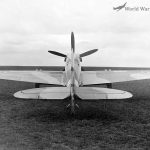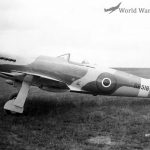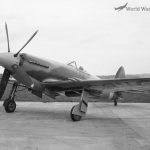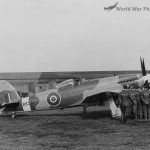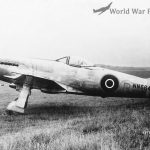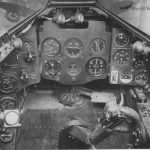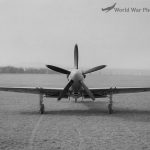rear view
Spiteful RB518
Spiteful RB518
Spiteful RB517
Spiteful RB517
The third production Spiteful XIV
Spiteful RB521
2nd prototype with cut-down rearfuselage
Spiteful cockpit 3
Spiteful cockpit
Spiteful cockpit
Front view
Supermarine Seafire XVII SX243
From November 1942, Supermarine’s design team, led by Joseph Smith, began work on a new wing with a laminar profile. The plan was to start with a redesign of the ordinary Spitfire Mk.23 fighter, and then develop a final new Type 371. After developing the preliminary design, the Air Ministry submitted F1/43 requirements for a single-seat fighter with a laminar wing. In doing so, they demanded a wing design that would allow the wing to be folded in a naval version without much complication of the internal structure. At this stage, it was planned that different versions of the new aircraft would be powered by both Merlin and Griffon engines. In December 1943, the Air Ministry signed a contract to build three Supermarine Spitfire Mk.VIII with the new laminar wing. However, in March 1944, the idea of building a prototype with Merlin engines was abandoned. Series production of the plane was then planned for 800 units.
Eventually, laminar wings were mounted to the fuselage of the Spitfire XIV. It made its first flight on June 3, 1944. The real prototype Spiteful was completed in late 1944/1945 and flown on January 8, 1945. Initially, it flew with a tail plane from the Spitfire Mk.XIV, but in the middle of the year an enlarged vertical and horizontal stabiliser was installed. In this form it was flown on June 24, 1945. On April 02, 1945 the first serial aircraft was flown. In the same month, the Air Ministry made the first reduction in the order, reducing it to 650 copies. In the following months, further reductions were made by 260 aircraft, then by 310, and then by 58 more, leaving a residual order for 22 aircraft. In 1946, the entire Spiteful program came into question. The Air Ministry approached Joseph Smith with the information that the fighter could only be ordered for the RAF as an attack aircraft, as the role of fighters was being taken over by jets.
The last version was the Spiteful Mk.XVI built in only one copy. It received a Griffon 101 engine with a two-stage, three-speed charger, with supercharging, driving a five-blade propeller. After two accidents, the Griffon 121 engine (a version of the Griffon 101 with a regulator to drive a counter-rotating propeller) was used, driving a six-blade Rotol propeller. During trials in 1947, it reached a speed of 795 km/h in horizontal flight. Its trials came to an irrevocable end on March 29, 1949, when, while being lifted by a crane after another forced landing, it ripped from its ropes and completely crashed. In view of the RAF’s rejection of the Spiteful, Switzerland expressed interest in it and preparations began for familiarization flights by Swiss pilots. However, the Ministry of Aviation Production prohibited the sale of these aircraft. A total of 22 planes (including prototypes) were built, with the last three serial planes being given for scrap after production, without even flying them.
